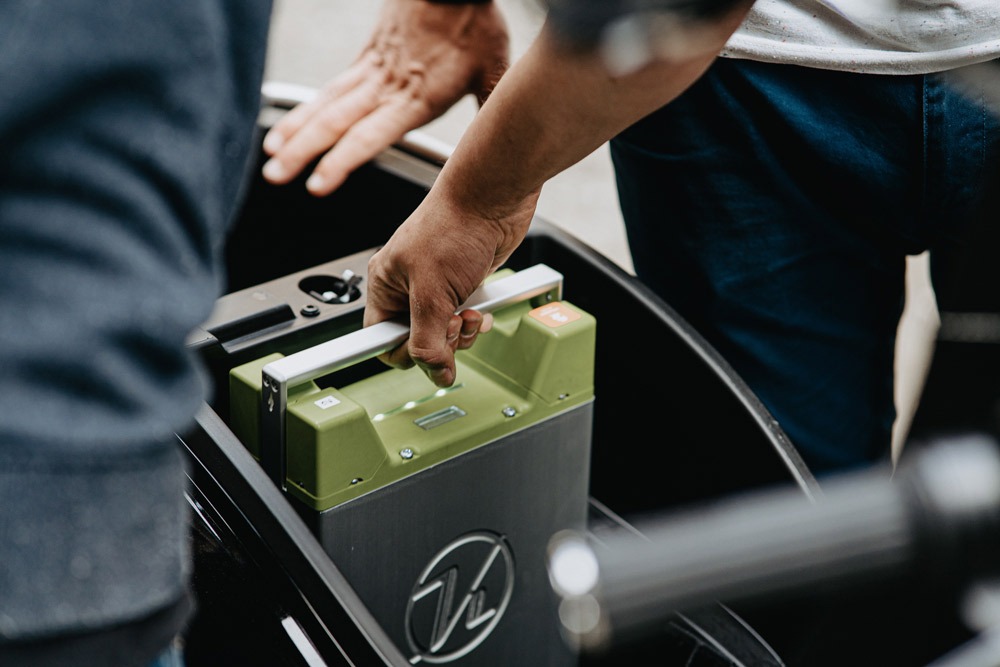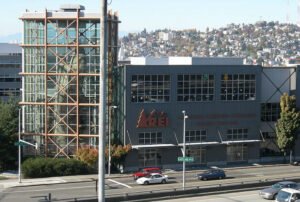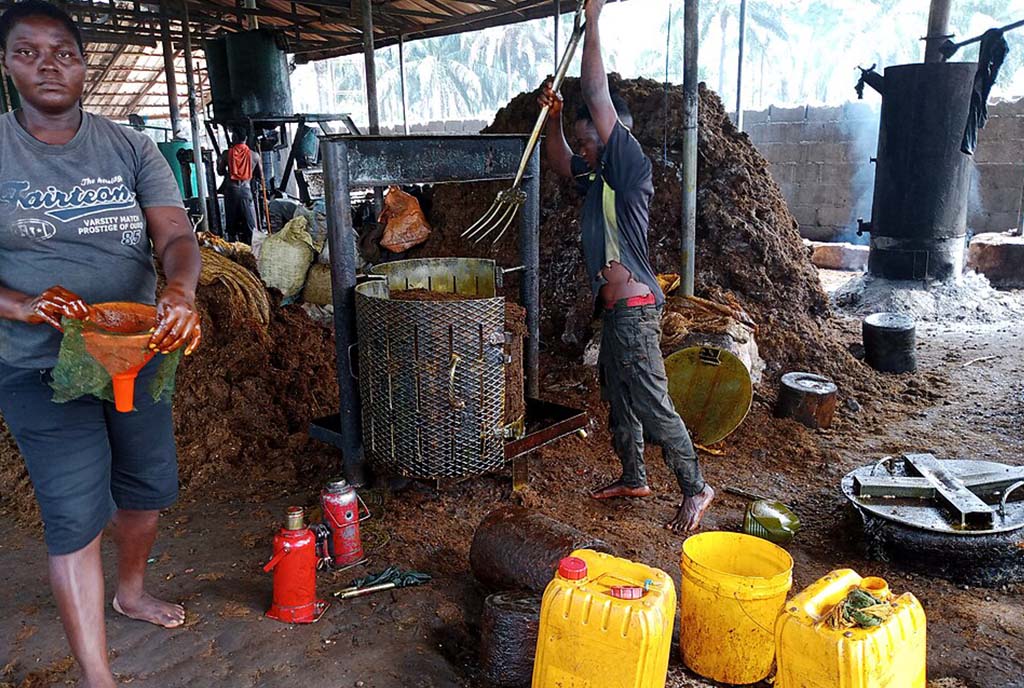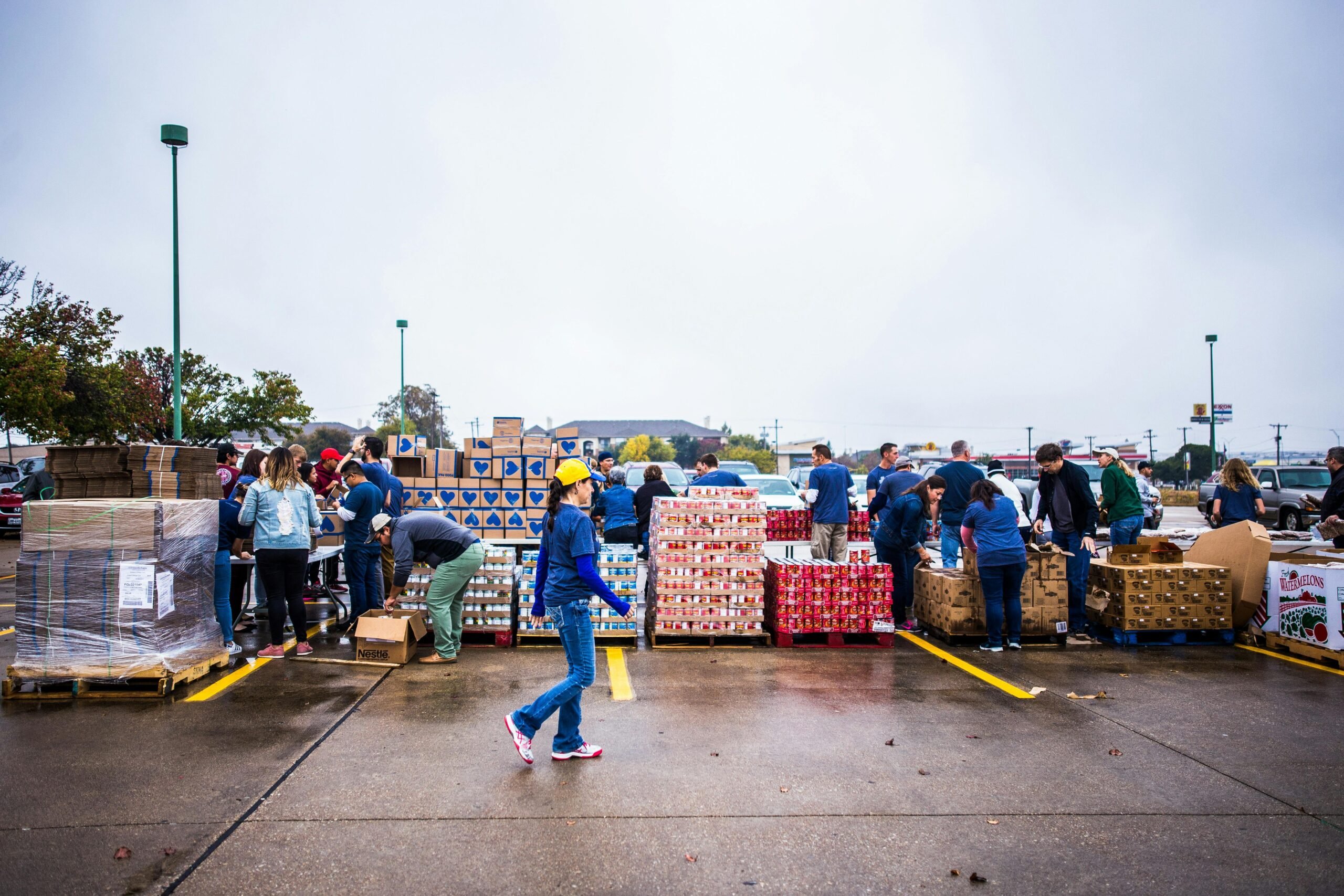
Consider the Salton Sea, the largest lake in California. Formed by flooding from a canal that broke in 1905, this landlocked body of water traverses Imperial and Riverside counties in Southern California. Its fortunes have risen and fallen over time. At one point it was touted as a site for health tourism. It has since become known as an environmental catastrophe; water carrying salt and other minerals, including agricultural fertilizers, flowed into the lake and then evaporated, leaving the salt and minerals behind. Salinity rose, and the polluted water that remained combined with toxic dust storms, killing fish and birds and negatively impacting the health of people.
The complex of disasters that have beset the area is rooted in racial capitalism. The land was taken from the Indigenous peoples of California, who had learned to live with the region’s periodic flooding. The canal that broke in 1905 during spring floods was the result of attempts to divert the Colorado River to irrigate agribusiness ventures in what is really a desert. The current riskscape from Salton Sea pollution is racialized, with a largely Latinx and often undocumented population suffering the worst effects of authorities’ failure to protect nature and communities.
Now, a new rush of interest in the area—from players from the same capitalist system that caused so many of the area’s environmental and health problems—is promising a bright future with a “win, win, win” for business, the environment, and local communities. How do they propose to pull off this hat trick? By taking advantage of geothermal energy production in the Salton Sea region to extract a metal that could bring windfall profits and facilitate the adoption of electrical vehicles (EVs) and (maybe) the provision of good high-wage jobs: lithium. With an astonishing amount of lithium reserves deep in the region’s geothermal brines, a new lithium “gold rush” is on.
A political struggle is under way about what will happen in and around [California’s] Salton Sea—and it helps to reveal the tension between promoting long-term system transformation and the need to scale quickly in a world on fire.Is “green justice” possible in what some are now terming “Lithium Valley”? It’s easy to be dubious, partly because renaming a place after the material you want to suck out of the ground hardly seems like the best first step to restoring nature and guaranteeing equity. But it is an intriguing prospect, particularly given that climate goals in California, the upcoming federal investment in EV charging infrastructure, requirements that new EV tax credits in the recently approved Inflation Reduction Act be designated for vehicles made in the US, and the National Blueprint for Lithium Batteries 2021-2030 developed by the Federal Consortium for Advanced Batteries, combine to create the sort of industrial policy that supports homegrown manufacturing which the US has long needed but rarely employed.
So, a political struggle is under way about what will happen in and around the Salton Sea—and it reveals the tension between promoting long-term system transformation and scaling quickly in a world on fire. When the opportunity is this big, the needs are so great, and the balance of power is this tilted, how should progressives in favor of a different vision of our economy maneuver? How do we balance the desire for a “solidarity economy” of mutual aid and worker ownership with the need to shape a future that is rapidly unfolding?
Understanding the Terrain
The first step in understanding the political terrain in the Salton Sea involves understanding the physical terrain, namely, the massive geothermal field—one of the largest geothermal reservoirs in the world—that lies beneath the Salton Sea region. Currently, 11 power plants operate in the region, pumping up hot fluids to generate steam and electricity. Traditionally, the plants have then pumped these fluids, along with the trace minerals they contain, back into the earth—but the novelty now being explored is how to filter lithium out of the salty brine.
This filtering process is appealing for several reasons. First, other methods of gathering lithium rely on either open pit mining or large evaporation fields; recovering lithium as a side product from a relatively clean method of energy generation would not add to carbon emissions or scar huge swaths of our planet. Second, the Salton Sea has lots of lithium: if the proposed process works, the lake could meet all US demand for powering EVs and about 40 percent of the world’s projected total demand.
Finally, the US currently produces almost no lithium, with three countries (Australia, Chile, and China) producing over 85 percent of the world’s total supply. With demand for electric vehicles predicted to jump six-fold in the next decade, having a large and reliable source of domestic lithium would prevent supply chain disruptions and boost employment in battery and EV manufacturing, creating an estimated 240,000 or more new jobs by 2030.
Such an economic boom would be potential relief for a part of California far from the riches of Silicon Valley. Imperial County, where the lithium would be extracted, has the highest unemployment rate in the state—13 percent, triple the statewide average. It is the second poorest county in the state, with a median household income that is only 35 percent of the that enjoyed in Santa Clara County—the heart of Silicon Valley and home to many of the state’s high-tech firms. By contrast, Imperial County depends on agriculture and tourism, and it lacks the economic drivers (such as manufacturing industry) usually associated with “high road” employment.
Of course, it takes significant resources to extract lithium. Three companies, all with major corporate and/or billionaire backing, are currently in the game—Energy Source, the Warren Buffett-supported Berkshire Hathaway Energy, and Controlled Thermal Resources (CTR). For its part, CTR has pledged to invest $1 billion to build a new power plant that can recover lithium from the brine, and it is working with a new company, Statevolt, that has announced plans for a $4 billion battery manufacturing facility in the region, raising the hope that at least some EV jobs will go to local residents.
None of this is guaranteed: what communities gain from such deals depends on their power and leverage. One obvious leverage point is at the point of lithium recovery itself—recently, a strong community coalition with allies in local and state government secured a substantial new levy on lithium production to generate funding for local economic development and infrastructure investment. Labor unions and their allies have been vocal in demanding that all new projects have project labor agreements and community benefit agreements, ensuring high-road employment practices associated with living wages, local hire agreements, and training programs for local residents.
While campaigns for a levy and new construction employment makes sense, there is also, as noted above, substantial potential for good job creation in the lithium battery supply chain. This includes jobs in EV manufacturing and in the industry’s reuse/recycling end. Lithium extraction accounts for a small portion of these jobs: the majority of jobs are in battery cell and battery pack manufacturing.
It is an open question how many if any of these jobs will end up in the region and what the quality of these jobs will be. Other states, including neighboring Arizona and Nevada, are working to attract battery manufacturing facilities, touting lower environmental regulations and laxer labor protections as part of their appeal.
Finding Common Ground?
California created a Blue-Ribbon Commission on Lithium Extraction that is looking at environmental and labor issues, trying to analyze opportunities for and benefits from lithium recovery and use throughout the state. The commission includes representatives from business, public agencies, environmental and community organizations, and two Native American tribes. The happy talk at most meetings is all about how everyone can gain from the bonanza ahead. But behind the scenes—and sometimes out in the open—fierce struggles for control are underway.
For example, the levy on lithium noted above was a point of contention. Business leaders acknowledged the need for revenue to fund restoration of the badly damaged Salton Sea but preferred low lithium tax rates set as a fixed percentage of sales. Communities and local political leaders wanted a tax per metric ton of lithium, one that generates increased revenues as production rises and is less susceptible to accounting tricks. With strong support from grassroots activists and local politicians, the higher flat tax passed the state legislature at the end of June 2022 with promises that 80 percent of the revenue generated will be spent in Imperial County. The remaining 20 percent can be spent on restoration projects throughout the state.
While some lithium investors are now threatening to pack up their bags and leave, such a move is largely unrealistic: the potential profit is too alluring, and indeed, Berkshire Hathaway, one of the big three firms involved in potential lithium extraction, did not oppose the tax, labeling it a “balanced outcome.” Exploiting such divided opinions among capitalists could be useful.
In any case, while the new funding will largely benefit Imperial County, it will also allow for investments that could help residents of Coachella, Riverside County. Best known for its annual musical festival, Coachella is, in fact, a distressed community with a poverty rate of nearly 19 percent, far above the 11.5 percent statewide average. Coachella advocates are hoping to lure parts of the EV supply chain in their direction, creating tensions between communities on either side of the Salton Sea, which are both overwhelmingly Latinx and low-income.
To be transformative, there is a need to not just practice economic development as usual, but to pursue an alternative economic future rooted in the vision of a circular and regenerative economy with racial justice at its core. Of course, that’s not top of mind for most investors
These are just some of the emerging complexities. Debates will continue over how the new lithium tax will be used, with some revenue likely to go to infrastructure to facilitate lithium and geothermal development, and some focused on quality of life for residents and economic diversification initiatives. Cities attempting to lure other parts of the supply chain will be forced to balance demand for high-quality employment with the reality of low-cost competition. Forcing capital to do the right thing requires just that—the force of organized community voice—and in a region where extraction, dispossession, and disposability have been the norm, the future is hardly certain.
Extracting the Future
The story of the Salton Sea is an interesting tale, partly because it contains the sort of elements of a history written by acclaimed author Mike Davis: distorted ecologies, vulture capitalists, racist underpinnings, and vibrant struggles. It also offers an example of a key conflict in world views and projects. On the one hand, we have neoliberal “greenwashing.” On the other, there is the potential to shape an emerging industry in a way that rectifies past harms and builds a better future.
Sign up for our free newsletters
Subscribe to NPQ's newsletters to have our top stories delivered directly to your inbox.
By signing up, you agree to our privacy policy and terms of use, and to receive messages from NPQ and our partners.
Communities need to “drive” this future—and pitted against billion-dollar behemoths, they are going to need to move fast and organize hard. More profoundly, if their efforts are to be transformative, it is essential to not just practice economic development as usual, but to pursue an alternative economic future rooted in the vision of a circular and regenerative economy with racial justice at its core. Of course, that’s not top of mind for most investors—and that’s why it’s important to turn to advice from the late Erik Olin Wright on how to think about reforms that push boundaries and attain tangible and practical wins.
In his posthumously published book, How to be an Anticapitalist in the Twenty-First Century, Wright contends that our real economy (as opposed to the economy of economic models) is driven by far more than the combination of market exchange, private ownership, and wage labor that defines capitalism. Our economic system combines capitalism with a host of other ways of organizing production—by states, within families, and through community-based networks and nonprofit organizations. Wright also argues that if capitalism is to be surpassed, it will most likely be because it has been eroded over time, rather than by some dramatic juncture or revolution.
And while escaping capitalist relations—the goal of building solidarity economy enterprises that was the focus of the lead article in NPQ’s 2021 economic justice magazine issue—is important, Wright argues that transforming capitalism requires combining three distinct approaches—taming capitalism by counteracting its worst harms, resisting capitalism by affecting the behavior of capitalists and political elites, and dismantling capitalism, which does not simply mean supporting solidarity economy enterprises, but also building alternative enterprises at scale. These efforts often require state action (think public rather than investor-owned utilities, or the post office’s financial services, which provided an alternative to the private banking system from 1911 to 1966 and might be making a comeback).
We have to stop talking about the economy and instead talk about our economy. When people say, ‘the economy,’ it makes it sound like a set of rules established by God or nature rather than a set of arrangements that human beings create and can remake.
We generally prefer not to talk about capitalism (or post-capitalist futures)—the term has so much ideological baggage associated with it that we have found it often closes (or clouds) people’s minds, making it harder to build a powerful popular front movement. But the two of us have been developing an approach of “solidarity economics” that is broadly consistent with Wright’s anti-capitalist framing, and we think it can offer guidance when the contradictions are deep but opportunities are ripe—and time is tight.
Solidarity Economics Meets the Salton Sea
What is solidarity economics? After writing an article on this framework that appeared in NPQ, we published a book on the topic that can be downloaded for free. (There is also a comic book version). We encourage people to read the whole book, but the CliffsNotes version boils down to three key points.
First, we have to stop talking about the economy and instead talk about our economy. When people say, “the economy,” it makes it sound like a set of rules out there established by God or nature rather than a set of arrangements that human beings create and can remake. The “our” also sets the stage for laying a claim for universal income, forging new rules to protect workers and our environment, and widely distributing the collectively inherited resources that are so often exploited for private gain.
Such language can be used to insist on prioritizing the public good and repairing the environmental and social damage wrought by past generations in the Salton Sea. It lends support to the lithium tax so strongly opposed by some key firms—and it reaffirms that in this new “gold rush,” communities are only asking for their due. After all, development of the complex technologies involved in filtering lithium has occurred thanks to massive investments of taxpayer dollars. Moreover, the whole EV industry is being subsidized—due to policies pushed by social movements to address the climate crisis—and so some benefits should accrue to the commons and not just investors.
The second key point is that mutuality matters for economic performance. We have contributed to an emerging body of research showing that inequality and segregation erodes prosperity for most of us. The neoliberal myth that fairness comes at a cost to overall well-being is just that, a myth. Indeed, Imperial County is a good example of how hyper-exploitation undermines sustainable growth, and why investing in expanded job opportunities in the region will be good for the entire state and country.
Just as important: there is more mutuality in our existing economy than most people who celebrate or criticize capitalism realize. This mutuality is visible even in the interactions between the three companies seeking to mine lithium from the Salton Sea. They are collaborating in multiple venues, even as they compete for market share. The formation of the EV lithium supply chain will require collaboration between hundreds of companies to manufacture materials, components, battery packs, and vehicles and to ensure battery reuse and recycling, which is needed to create a sustainable, circular economy. If the vision of the innovation hub around a “Lithium Valley” is to become a reality, the EV industry must also collaborate with universities and research labs in the region and throughout the state, as the high-tech industry did in Silicon Valley.
The third key point of solidarity economics is that because some people benefit from the current state of affairs, we need bigger and broader social movements to challenge and reconfigure the balance of power. With well-financed mega-companies scaling up to jump on this lithium opportunity, local environmental and economic justice activists are going to need to build alliances with other movement builders (and even other business and political leaders) across the state if they are going to influence the EV industry as it ramps up.
We tend to think of social movements in the context of visible protests, but shifting power requires a range of strategies—leadership development, research and legal support, advocacy and policy expertise, communication and messaging, organizational development, and fundraising. Allies in state government and private industry were important in getting the lithium levy passed in the state legislature. Expanding these kinds of alliances will be critical for maximizing job benefits for marginalized populations.
Meeting the Moment
We were prompted to write this piece partly because we are working on a new book on this topic and partly because of an excellent article by our friends Steve Dubb and Emily Kawano in the last issue of NPQ. Dubb and Kawano argue that we need to imagine “an economy beyond capitalism,” and they offer a vision of a “solidarity economy” grounded in mutual aid, democratic planning, and community and worker ownership. At the end of their piece, they present an important dilemma: how can we build social movements and fight for meaningful reforms while we struggle for another world that may be possible?
The case of lithium in the Salton Sea region provides a perfect foil for the tension between the ideal and the real. First, the economic opportunity is immediate with literally billions of dollars in potential investment involved. Sure, it would be great to have a community land trust with mineral rights be in charge of lithium capture in the region. Leveraging a worker-owned buy-out of Berkshire Hathaway Energy and turning it into a cooperatively run enterprise would be an amazing feat. But if building a cooperatively owned solidarity economy around lithium development is our strategy, we’ll never get out of the starting gate as the rush to develop gets underway. In the short- to medium-term, movements need to be pushing for high-road workforce partnerships, community benefits agreements, well-designed taxes, local employment, and more.
Second, while we’re worried about the tremendous injustices that lithium development could reinforce, there are also big opportunities—and not just for communities in Imperial County and the Salton Sea region. Accelerating a move to electric vehicle production with fossil-free and renewable energy resources could reduce climate injustices for millions around the globe, who face rising seas, raging droughts, heat waves, flooding, and other symptoms of our lack of solidarity with our planet.
To achieve such a transition in a meaningful timeframe requires leveraging existing production systems—including multinational companies that are committed to building the electric vehicle supply chain and that possess the technologies and capacities to work at the scale needed to make a rapid (and hopefully just) transition. A transition to justice is not automatic: global environmental and economic justice movements must hold firms accountable for sufficiently investing in the commons—no easy feat but necessary.
Is getting into the nitty-gritty of these day-to-day policy fights just rearranging deck chairs on the Titanic that is racial capitalism? Can fighting these kinds of fights within a capitalist system help lay the groundwork for a post-capitalist future? Is there space for non-reformist reforms?
There are no easy, definitive answers to these questions. The articles appearing recently in NPQ have helped push us all toward exactly the sort of debate we need to have. We agree that we need to transform our current economic system, to build a future in which solidarity drives economic decision-making. We need to forge a system that we can more meaningfully call our economy.
And with a climate in crisis, a democracy at threat, and lives and livelihoods at stake, social movements, we contend, need to develop a popular front perspective that can also provide a narrative and playbook for the next decades of the journey ahead.












